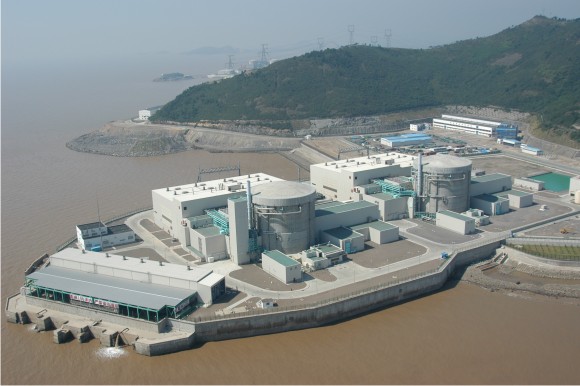Testing has been completed of a device for executing irradiation tests of various radioisotopes at the two pressurized heavy water reactors that make up Phase III of the Qinshan nuclear power plant in China’s Zhejiang province.
There is no isotope irradiation test function module in the original design of the pressurized heavy water reactor (PHWR). This means that the Qinshan project team needed to create a special device that could embed the isotope irradiation test function and is compatible with the existing design of the reactor. Most medical isotopes are short-half-life isotopes. This requires the rapid loading and unloading of irradiation test targets during the normal operation of the reactor.
The People’s Daily said, “After repeated adjustments, the project team and the design institute finally designed a prototype of the device concept.” The isotope irradiation test platform has the ability to automatically load and unload isotope irradiation targets online.”
The People’s Daily added, “During the debugging and verification process of the device, it underwent thousands of action tests, which fully verified the reliability of the device. On the 3rd of April in 2023, the National Nuclear Safety Administration officially approved Qinshan Nuclear Power to use the irradiation test device to conduct yttrium-90 irradiation tests. On the 23rd of April, the project team continued to work for nearly one hundred and twenty hours during the overhaul of Qinshan No.3 Plant. They successfully completed the device installation, cold commissioning and system identification operations. On the 14th of December, the first yttrium-90 target was successfully unloaded from the reactor and the hot test of the device was successfully completed.
The People’s Daily continued, “The platform has successfully realized the research and development and production of short-half-life medical isotopes for domestic commercial reactors, opening up a new path for the localization of medical isotopes and the development of radioactive drugs. In the future, Qinshan Nuclear Power will continue to deepen the production of reactor-irradiated isotope irradiation, and contribute to the independent and controllable supply of medical isotopes and the expansion of diversified applications of nuclear technology in China.”
The report mentioned that this marks the official completion of the first commercial reactor isotope research and development platform in China.
The China National Nuclear Corporation’s (CNNC) Qinshan plant comprises seven reactors. This makes it China’s largest nuclear power plant. Construction of Phase I of the plant was a three hundred MWe pressurized water reactor (PWR). It was the first indigenously-designed Chinese nuclear power station to be constructed. Work began in 1985, with the unit entering commercial operation in 1994. Qinshan Phase II is the location of four operating CNP-600 PWRs, built with a high degree of localization. Units 1 and 2, consisting of the first stage of Phase II, began operating in 2002 and 2004, respectively. Units 3 and 4 began commercial operation in October 2010 and April 2021. Phase III consists of two seven hundred and fifty megawatt pressurized heavy water reactors supplied by Atomic Energy of Canada Ltd and commissioned in 2002 and 2003.
In April this year, CNNC announced that the Qinshan plant has begun mass production at one of its PHWRs of carbon-14, which is used in medical and scientific research and in fields including agriculture and chemistry as well as in medicine and biology. Apart from very limited production in experimental reactors, all carbon-14 was previously imported.
Nuclear Reactors 1455 – China Begins Production Of Radioisotopes At The Qinshan Nuclear Power Plant

